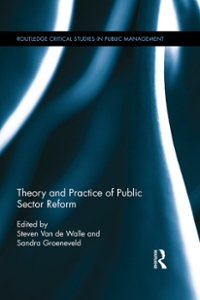Answer the following questions.
4. Vacancy costs and the labor market. Consider the search-theoretic model of the labor market of Diamond {1982), Mortensen (1982} and Pissarides (1985). a. The equilibrium tightness of the labor market, 6", solves the following equation -ny-w luWWW Plot the left and the right hand side of the above equation as functions of 9 and identify 6'. k=so b. Using the same yaph as before, identify the effect of an incraese in the vacancy cost it: on the equilibrium tightness of the labor market. Interpret your nding. c. The equilibrium unemployment, n", and the equilibrium vacancies, v", solve simultaneously the following system of equations Plot the solutions to these two equations in a graph that has it on the horizontal axis and v on the vertical axis (Le. plot the Beveridge curve and the market tightness curve]. Identify n\" and 11*. (1. Using the same graph as before, illustrate the eifect of an increase in the vacancy cost I: on the equilibrium unemployment and vacancies. Interpret your ndings. e. Should the government intervene to lower unemployment in response to an increase in k? 3. The IS-LMFE Model. Consider a closed eoonomy where desired consump- tion is given by: Cd = 1m + car 1cm? Desired investment is described by: I? = 50 lr Government purchases are equal to G = 2st}. The liquidity function is: MY, 2') = 1m + 0.2? 25an Assume that M = 5m}, P = 1'0 and an"! = H.132. 3} b} 8} Derive the IS Curve for this economy. Plot it on a diagram with Y on the horizontal axis and r on the vertical axis. Derive the LM curve. Plot on your diagram from part a). Solve for the equilibrium levels of r and Y in this economy. What must full employment output be in order for this to be a. general equilibrium? Plot the FE curve on your graph and label the equilibrium. Show the effects of an expansionary scal policy by deriving the IS Curve in the case where {3\" = 3013. Plot it on your graph. What are the new levels for r and 1"? Is the economy in a. long run equilibrium? What is another example of a factor that may shift the IS Curve other than scal policy? Be sure to note the direction the IS Curve will shift. Show the elfects of a contractionary monetary policy by deriving the LM Curve in the case where M\" = 5!]. Plot it on your graph. What are the new levels for r and Y? What is another example of a factor that may shift the LM Curve other than the nominal money supply? Be sure to note the direction the LM ICurve will shift. In this question, work with the original IS curve from part a]. 4. (30 points) Consider the following game. There are ten dollars to divide. Two players are each required to simultaneously name an integer between 0 and 10. The player who names the higher number gets to keep the money. If they name the same number, the money is equally shared between them. (a) Describe the set of players N, the set of strategies { Silien, and the payoff function QuitiEN. (b) Are there strategies that are strictly dominated? Demonstrate your reasoning. What are the resulting strategies after iterated elimination of strictly dominated strategies? (c) Find the best responses (correspondence) for each player. That is, find the strategies that maximize a player's payoff given what the other player does. (d) Find the Nash equilibria of the game. (e) Suppose now the game is changed. Whenever there is a tie, each player receives nothing. Answer the same questions in parts (b) and (c). Find the pure-strategy Nash equilibria of the game.(3) You and a classmate are assigned a project on which you will receive one combined grade. You each want to receive a good grade, but you also want to avoid hard work. In particular, here is the situation: If you both work hard, you get an A, which gives you each 40 units of happiness .If only one of you works hard, you both get a B, which gives you each 30 units of happiness. .If neither of you works hard, you both get a D, which gives each of you 10 units of happiness. . Working hard costs 25 units of happiness. (a) Fill in the following payoff matrix: Your decision Work Shirk Classmate's Work decision Shirk (b) What is the likely outcome? Explain your answer. T (c) If you get this classmate as your partner on a series of projects throughout the year, rather than only once, how might that change the outcome you predicted in part (b)










